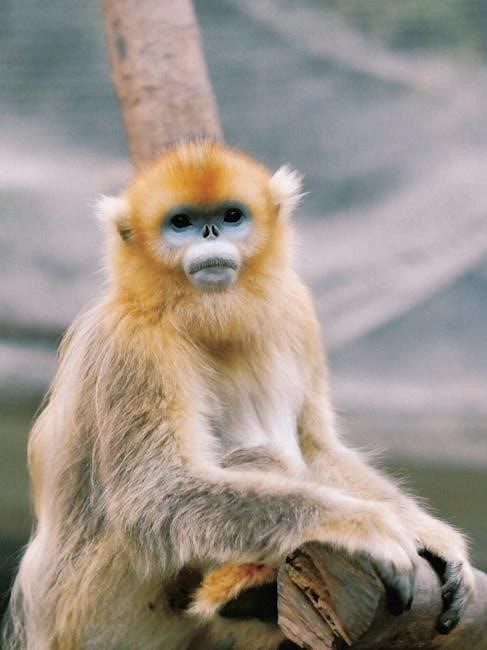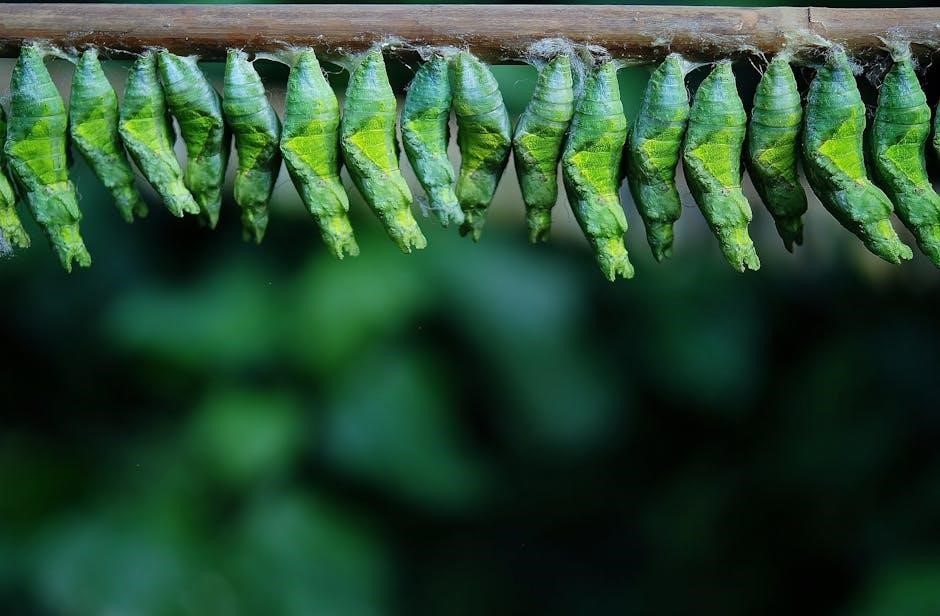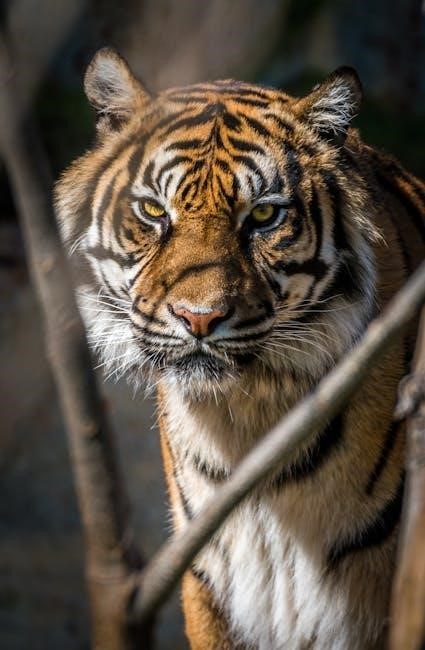
the preservation of ecosystems and species, using pdf notes as a resource for learning and understanding conservation principles and methods effectively always online.
Definition and Scope
Conservation biology is defined as the study of the preservation of ecosystems and species, with a focus on the long-term survival of biological communities. The scope of conservation biology is broad, encompassing the study of ecological principles, human impacts on the environment, and the development of strategies for conserving and managing natural resources. According to online resources, conservation biology involves the application of scientific principles to the conservation of species and ecosystems, using a variety of methods and techniques, including habitat preservation, species reintroduction, and ecosystem restoration. The definition and scope of conservation biology are closely tied to the goals of conservation, which include protecting endangered species, preserving ecosystem function, and maintaining biodiversity. By studying conservation biology, students can gain a deeper understanding of the complex relationships between human and natural systems, and develop the skills and knowledge needed to address the complex conservation challenges facing the world today, using pdf notes as a valuable resource.
Goals and Objectives
The primary goals of conservation biology are to preserve and protect threatened and endangered species, maintain healthy and functioning ecosystems, and promote sustainable use of natural resources. The objectives of conservation biology are to develop and implement effective conservation strategies, manage human impacts on the environment, and educate the public about the importance of conservation. According to pdf notes, conservation biologists aim to achieve these objectives by conducting research, monitoring populations, and developing conservation plans. The goals and objectives of conservation biology are often specific to particular species or ecosystems, and may involve collaboration with governments, NGOs, and local communities. By achieving these goals and objectives, conservation biologists can help to maintain biodiversity, ensure ecosystem services, and promote human well-being. Conservation biology pdf notes provide a valuable resource for learning about the goals and objectives of conservation biology, and can help students and professionals to develop a deeper understanding of the field and its applications. Effective conservation requires a clear understanding of these goals and objectives.

Importance of Conservation Biology
Conservation biology is crucial for maintaining ecosystem balance and biodiversity, using pdf notes as a learning resource always online effectively every day.
Role in Wildlife Management
Conservation biology plays a significant role in wildlife management, as it involves the preservation and protection of species and their habitats. The goal of wildlife management is to maintain healthy and sustainable populations of wildlife, and conservation biology provides the scientific foundation for achieving this goal. Through the study of conservation biology, wildlife managers can develop effective strategies for managing wildlife populations, including the use of techniques such as habitat restoration and species reintroduction. Additionally, conservation biology informs the development of policies and regulations related to wildlife management, such as hunting and fishing regulations; By using pdf notes and other resources, students of conservation biology can gain a deeper understanding of the role of conservation biology in wildlife management and develop the skills and knowledge needed to pursue careers in this field. Conservation biology is essential for maintaining biodiversity and ecosystem health, and its application in wildlife management is critical for ensuring the long-term survival of species.
Human Impact on the Environment

Human activities have a significant impact on the environment, and conservation biology seeks to understand and mitigate these effects. The use of natural resources, such as water and land, can lead to habitat destruction and fragmentation, which can have devastating consequences for ecosystems. Pollution, climate change, and overexploitation of resources are also major concerns, as they can alter ecosystem processes and lead to the loss of biodiversity. Through the study of conservation biology, using resources such as pdf notes, students can gain a deeper understanding of the complex relationships between human activities and the environment. By examining the impact of human activities on ecosystems, conservation biologists can develop strategies to reduce the negative effects and promote sustainability. This knowledge is essential for developing effective conservation plans and promoting environmental stewardship, and can be applied in a variety of contexts, from local communities to global initiatives, to protect the environment and preserve natural resources. Conservation biology provides a framework for understanding and addressing these complex issues.

Course Overview
Course provides education on conservation biology using pdf notes and online resources effectively always.
Course Description
The course description for introduction to conservation biology pdf notes includes a comprehensive overview of the subject, covering topics such as the principles of conservation biology, ecosystem management, and the impact of human activities on the environment. The course is designed to provide students with a thorough understanding of the concepts and methods used in conservation biology, using pdf notes and other online resources as a primary source of information. The course description also outlines the learning objectives, which include understanding the importance of conservation biology, identifying the major threats to biodiversity, and developing skills in conservation planning and management. By the end of the course, students will be able to apply the principles of conservation biology to real-world scenarios, using the knowledge and skills gained from the course to contribute to the conservation of ecosystems and species. The course description is available online, along with the pdf notes and other course materials.
Program Overview
The program overview for introduction to conservation biology pdf notes provides a general outline of the course structure and content, including the topics covered, the learning objectives, and the assessment methods. The program is designed to provide students with a comprehensive understanding of conservation biology, using a combination of lectures, discussions, and practical exercises. The course materials, including the pdf notes, are available online, and students can access them at any time. The program overview also includes information on the course schedule, the instructor’s contact details, and the requirements for completing the course. By reviewing the program overview, students can gain a clear understanding of what to expect from the course and how to succeed in it. The program overview is an essential resource for students, and it is recommended that they review it carefully before starting the course. The online resources are easily accessible through the course website.

Resources and References
Conservation biology resources include pdf notes and online articles for further reading and research always available online easily.
Online Resources
There are numerous online resources available for learning about conservation biology, including websites, articles, and pdf notes that provide valuable information on the subject. These resources can be accessed through various online platforms, such as academic databases, online libraries, and educational websites. Many organizations, such as the Society for Conservation Biology, also offer online resources, including publications, research papers, and educational materials. Additionally, online courses and tutorials are available for those who want to learn more about conservation biology. These resources can be useful for students, researchers, and professionals in the field, providing them with access to a wide range of information and tools. By utilizing these online resources, individuals can gain a deeper understanding of conservation biology and stay up-to-date on the latest research and developments in the field. Online resources are easily accessible and can be used to support learning and professional development.
Professional Organizations
Professional organizations play a crucial role in promoting conservation biology, and many of them offer resources and support for individuals interested in the field. The Society for Conservation Biology is one such organization, with a global community of conservation professionals dedicated to advancing the science and practice of conserving Earth’s biological diversity. Other organizations, such as the Wildlife Conservation Society and the International Union for Conservation of Nature, also work to promote conservation biology and provide resources for professionals and students. These organizations often publish research papers, reports, and pdf notes on conservation biology, which can be accessed through their websites or online libraries. By joining these organizations, individuals can network with other professionals, stay updated on the latest research and developments, and contribute to the advancement of conservation biology. Membership benefits may include access to exclusive resources, discounts on publications, and opportunities for professional development.